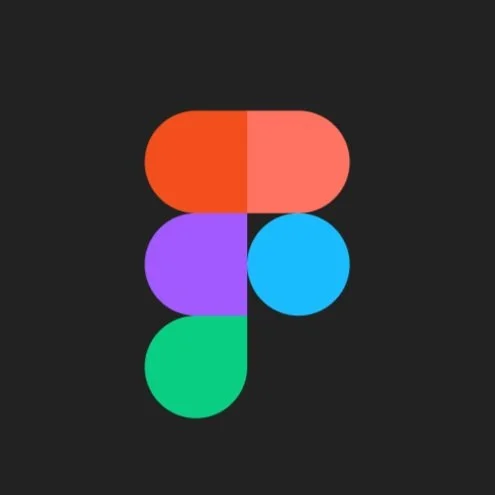Tools
Figma, Framer, Photoshop
Designing TLC’s New Digital Home From Local Café to Global Community
At-A-Glance
TLC Tamondai is a grassroots language exchange uniting locals and ALTs in Japan. I redesigned their digital platform with a bilingual, mobile-first UX—removing friction in sign-ups, clarifying event flow, and aligning the site with their mission of inclusive, community-first engagement.
My Role
Product Designer — Interaction Design, Visual Design, User Flows, Rapid Prototyping
Deliverables
Component Library,
High fidelity Designs
Usability Testing
Timeline
Feb 2025 — Apr 2025
The Problem
Scattered Information, Missed Connections
TLC relied entirely on scattered LINE messages, Instagram posts, and word-of-mouth to organize meetups. There was no central place to find clear information about times, pricing, or how the community worked. Newcomers struggled to join, and hosts had to manually chase large group chats every month just to keep momentum alive. TLC had the heart of a thriving community — but no system to support its growth.
The Solution
2.
3.
1.
All-in-One Community Onboarding
Creating a centralized digital space where language, culture, and community could connect naturally — minimizing confusion, reducing organizer burden, and making it effortless for newcomers to understand, join, and participate. By turning scattered information into a cohesive experience, TLC could grow without losing its heart.
Smooth Entry
Joining TLC becomes effortless — clear navigation and a welcoming first impression help newcomers get oriented quickly.
Celebrate Culture
The design highlights diverse member stories and cultural experiences, putting meaningful exchange at the center.
Foster Community
Dedicated spaces invite members to share, reflect, and stay connected, nurturing an active and supportive community.
Research
What were the main challenges for ALTs and local members when trying to join or stay involved with TLC?
Pain Points
“We usually just post in the LINE group, but people still ask the same questions every week.”
“If someone new asks how to join, I just send them whatever link I can find at the time.”
Where Users Spent the Most Time Navigating TLC
Most people rely on LINE and Instagram, but overlap between sources creates confusion. Even with posters and personal invites, a few still showed up unsure about what TLC even was — reinforcing the need for a centralized, bilingual digital home.
Clarity Before Arrival Was the Key Barrier to Confidence
What Participants Wish They Knew Before Coming
The less participants knew about the event beforehand, the more hesitation and confusion they reported. For many, it wasn’t the content or language level that held them back — it was simply not knowing what to expect.
Uncertainty around the vibe, language level, and RSVP flow led to second-guessing participation.
Newcomers wanted reassurance that the space was beginner-friendly and casual — not a formal or advanced-level class.
“I didn’t know if I had to sign up or if beginners like me were even welcome.”
“英語が苦手なので、雰囲気がカジュアルなのか分からず、参加するのに少し勇気がいりました。”
Most TLC participants relied on LINE or word-of-mouth to get updates, which made it easy to miss important details.
Organizers were repeating the same info frequently due to lack of a centralized, easy-to-access place for newcomers.
New members often felt unsure how to join or what to expect, especially when bilingual support wasn’t immediately visible.
HMW
How might we design a clear, unified experience that guides new and returning members to feel informed, welcomed, and ready to join TLC?
Design
Designing Clarity For Real-Life Use Cases
After uncovering the main barriers to joining or navigating TLC events — from unclear messaging to scattered updates — I designed a mobile-first interface that brings clarity, ease, and confidence to new attendees.
The UI emphasizes simplicity, low-pressure engagement, and accessibility for both ALTs and local Japanese users.
RSVP Flow
RSVP was simplified to reduce friction for first-time visitors. Users can express interest without needing to register or log in.
The flow includes friendly confirmations and clear language to ease hesitation and increase follow-through.
Event Details
Home Page
First-time visitors see what TLC is at a glance, with a clean headline and subtle visual cues for language options. It builds trust and lets people know this is a casual, safe place to join.
Blog Posts
A central space for sharing stories, recaps, and tips from both locals and ALTs. This section encourages connection through reflection, with a clean card layout and tag filters that make it easy to explore by topic or language — reinforcing TLC’s culture of shared growth.
This screen consolidates the most commonly asked information: time, location, language level, vibe, and what to expect.
The layout prioritizes scannability and reduces cognitive load by grouping details logically.
Tag & Filter System
A shared tagging system connects all content areas — blog posts, learning recaps, and attendee suggestions. Users can filter by language, topic, or audience to quickly find relevant insights. It also allows TLC to surface community-sourced recommendations in a lightweight, moderated way.
Visual Design Decisions
The Design That Works For Everyone
Every visual choice was made to ensure clarity, comfort, and inclusivity — especially for bilingual users encountering TLC for the first time.
Simplified Icon System
Icons used throughout (e.g., calendar, message, checkmark) were chosen for clarity and ease of recognition, even without full language fluency.
Friendly Typography
Color palette
A soft but high-contrast palette of warm browns, ivory, and accent greens ensures legibility across devices — while keeping the tone welcoming and calm for both English and Japanese users.
Warm Logo Design
The final logo mark subtly blends dialogue and community symbols — reflecting the group’s purpose of cultural and linguistic connection.
This screen consolidates the most commonly asked information: time, location, language level, vibe, and what to expect.
The layout prioritizes scannability and reduces cognitive load by grouping details logically.
Reflection & What’s Next
What I Learned Along the Way
Designing TLC wasn’t just about UI — it was about lowering barriers and building trust across cultures. Here’s what stood out during the process:
Designing for bilingual/multicultural users
I learned how crucial it is to consider language nuance, icon clarity, and user onboarding when designing for a mix of locals and non-native speakers.Reducing friction for first-time attendees
From the RSVP flow to event clarity, every detail had to reassure new users that they were welcome and didn’t need to guess what was expected.What I’d improve next time:
I’d add a simplified update system for organizers — perhaps a lightweight CMS or admin view — to make announcements smoother and less dependent on manual posts.
Tools
Figma, Framer, Photoshop
Product Designer — Interaction Design, Visual Design, User Flows, Rapid Prototyping
Deliverables
My Role
Component Library,
High fidelity Designs
Usability Testing
Timeline
Feb 2025 — Apr 2025
Final Thoughts
This project was about making TLC more accessible. The community was already welcoming, but without a proper website, many people missed out. Now, with a clear, bilingual platform and an easy sign-up process, more people can join, connect, and grow together.
This redesign lays the foundation for TLC to keep expanding and bringing people closer—just like it did for me.




































